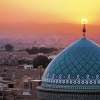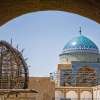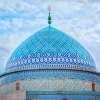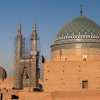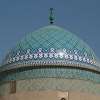Yazd is one of the remarkable centers for Persian architecture where homes numerous historical monuments. Tombs and mausoleums are among the architectural masterpieces in this city which with their imposing design and architecture catch the eye of every visitor. Let's visit Sayyed Roknadin Mausoleum (Bogheh-ye Sayyed Roknaddin in lonely planet) which we may have seen in the pictures of Jame Mosque of Yazd.

Where Is Sayyed Roknadin Mausoleum?
The Sayyed Roknadin Mausoleum is an impressive piece of architecture in the city of Yazd which due to be locating within a short distance from the Jame Mosque of Yazd, is considered one of the most important historical monuments and visiting places in this city.
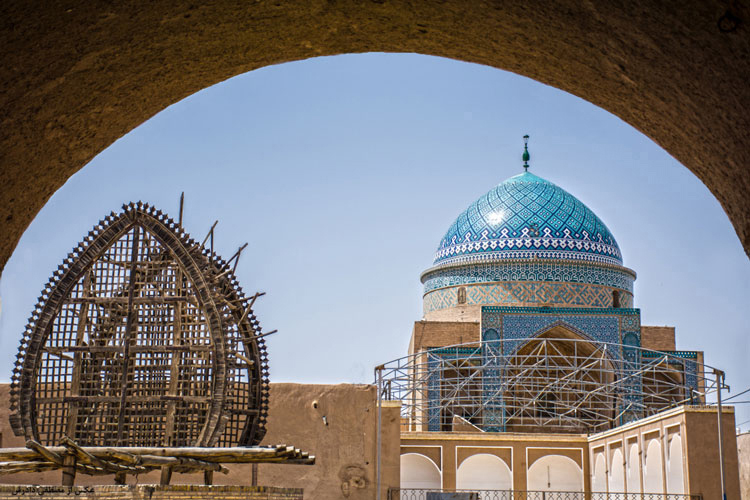
Who Was Sayyed Roknadin?
This monument was built in 704 SH (1324 AD) by the order of Sayyed Roknadin Mohammad Qazi who was a mystic and scientist in 8th century SH with the name of Rokniye School in which he was later buried since it was customary to bury the founder of the school in the school.
Wishing to know a little about Sayyed Roknadin, we must keep in mind that he was one of the descendants of Imamzade Jafar whose respectable shrine is located in Yazd. Sayyed Roknadin was a learned benevolent wise man whose father, Sayyed Nezam al- Din, was a mathematics scientist. Sayyed Roknadin who was famous through his life for ordering to build several qanats, mansions, mosques, mausoleums, and drug stores, some of which such as his mausoleum and Jame Mosque have remained up to now.
Finally, Sayyed Roknadin passed away in 732 AH (1352 AD) and his disciples were deprived of his infinite knowledge. Unfortunately, from Rokniye School and its highly scientific degree, it has remained only Sayyed Roknadin Mausoleum and a square in the opposite of the mausoleum which is called Vaght al-Saat.
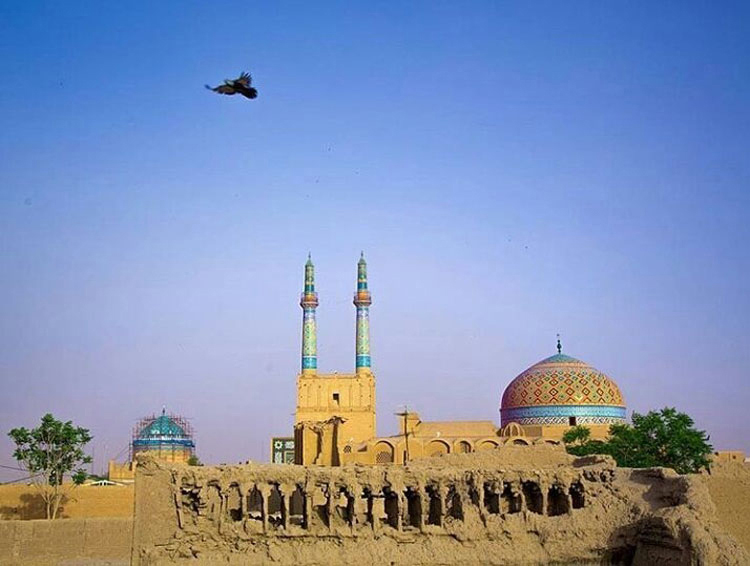
Architecture of Sayyed Roknadin Mausoleum
Let's enter the mausoleum which is one meter lower than the street surface. Based on its initial plan, Sayyed Roknadin Mausoleum is a square structure which outer side is 86.11 m long and its inner side is 60.14 m long. The dome is also held by a high cylindrical base. The mausoleum includes three spaces: Myansra (courtyard), iwan, and the area below its beautiful dome. Passing through myansra which is built simply, we go toward iwan where we will be astonished by hexagon tiles and moldings bearing arabesques lines all around. Also, the barrel vaults and a central lattice lightwell have given a special view to this monument.
This magnificent monument had not been so silent. Once there have been an observatory, a library, a mosque, a drug store, a hospital and a monastery. There have been hundreds of students, scholars and scientists going to this used-to-be school to solve their scientific problems. Alas, what has remained from that busy school is only a single part that is Sayyed Roknadin Mausoleum.
Various patterns such as different kinds of molding, stuccos, drawing inscriptions, decorative drawings, gildings, tile works were used to decorate this monument.
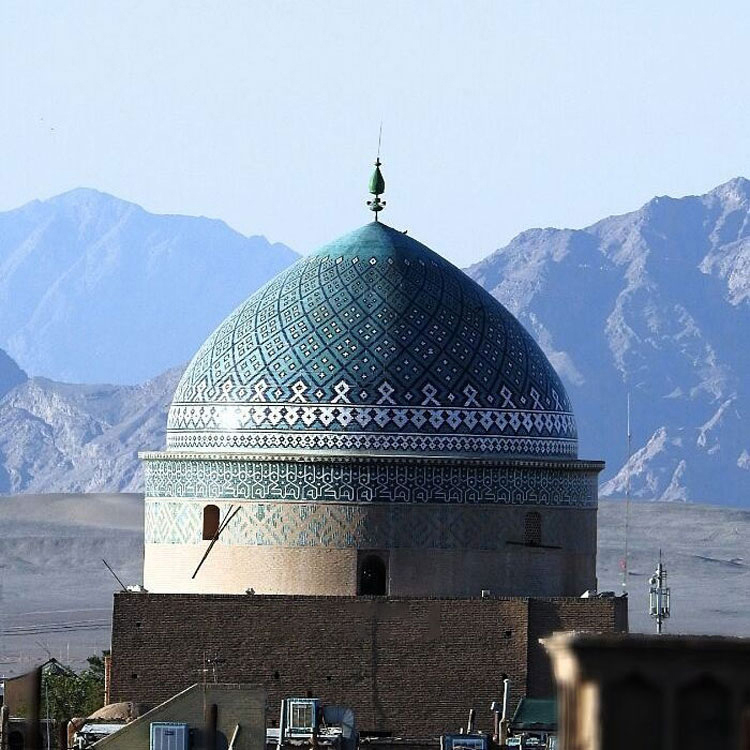
Dome of Sayyed Roknadin Mausoleum, The Glory of Yazd Architecture
Having visited the gorgeous iwan, we walk toward the space under the dome with a square plan. Skillful architects of the building have converted the dome from an octagon into a sixteen - sided shape by adding corners.
The dome is two - layered and shamrock shaped and decorated with white, azure, and turquoise mosaic tiles. The space under the dome is tetrahedral. All around the dome are decorated with brick lattice lightwells adorned with lots of ornaments. It should be noted that the dome has been built in Muzaffarid style and its decorations were added after an initial period of hardening which led to the creation of such a beautiful structure.
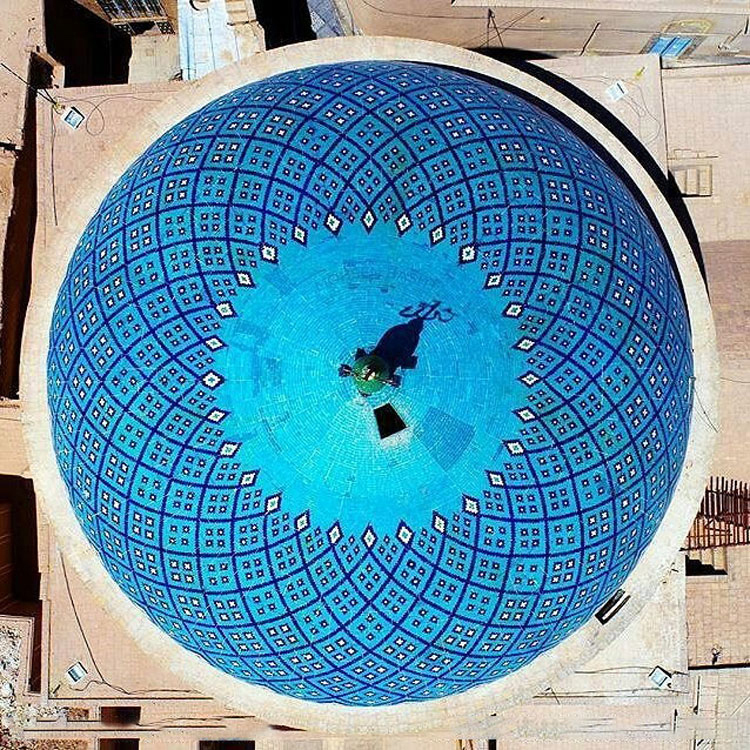
Tilework of Sayyed Roknadin Mausoleum
As mentioned earlier, use of beautiful mosaic tiles is the main characteristic of Sayyed Roknadin Mausoleum decorations. The dome of the mausoleum is adorned with mosaic tiles from different periods which have gone under various renovations so far. The dadoes, as protective coatings for the walls, are also decorated with various golden tiles. The exterior side of the iwan, which is a newly added part to the tomb, as well as the interior part of the building are beautifully adorned with solid-color and multi-color mosaic tiles. In general, the mosaic tiles of Sayyed Roknadin Mausoleum are all made of clay and stone.
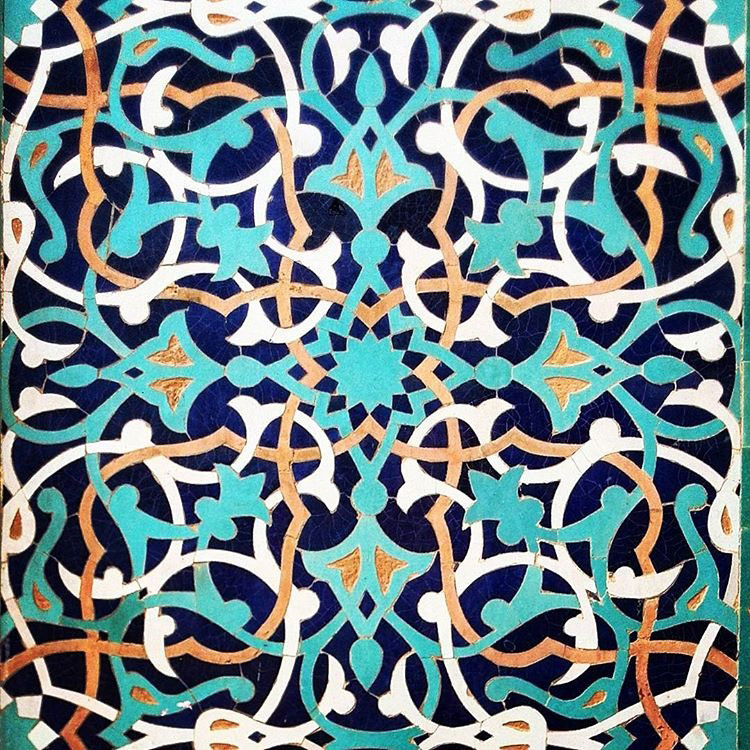
Gilding of Sayyed Roknadin Mausoleum
Just like many other tombs and religious buildings in the country, Sayyed Roknadin Mausoleum enjoys being decorated with gilding patterns as well to declare Sayyed Roknadin’s position and dignity. Today, some parts of the gildings on inscriptions have been remained which also can be seen in the central Shamseh of the dome, inside the squinches, mixed with arabesque patterns, etc. Based on the analysis performed on these gilding patterns, it turned out that the decorative layers in most of these parts contain 88 percent gold, for attaching which rose oil was used. Of course, it should be said that some parts of the golden effects in this building is related to the tin coated sheets.
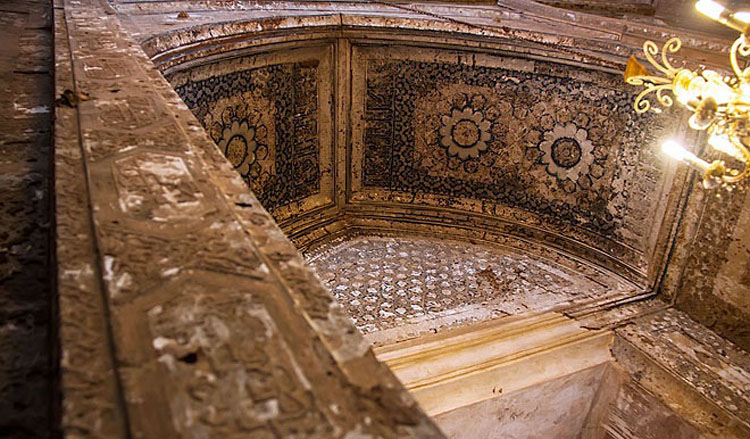
Paintings of Sayyed Roknadin Mausoleum
In Sayyed Roknadin Mausoleum, you will also be amazed with wonderful paintings, mostly related to the dome. These paintings include plant (arabesque) and geometric patterns created by scratch art. One of the most spectacular paintings inside the tomb is the Shamseh in the center of the ceiling which is divided into 24 parts and displays beautiful designs with golden lines and six-color paintings (blue, dark brown, light green, light brown, dark green, and dark brown). Other colors used in this part include red, brown, and black.
Among the main components of this section we can refer to colorful semicircle patterns which show off in the margins, the radiant circles in the center, and inverted arabesque patterns in the final part of the shamseh motif. The color light blue has been used mostly in different parts around gold, gray, brown, and green arabesque patterns to induce multiple volumes.
The inscriptions of Sayyed Roknadin Mausoleum consist of layers of thatch, gypsum, and a cover of natural gum and bear calligraphic works of great artists. These calligraphies are almost Quranic verses, some of which are written directly with a brush and some others are created through a special technique. Some of the examples of this calligraphic arts can be seen inside azure Toranjs as well as on the dome.
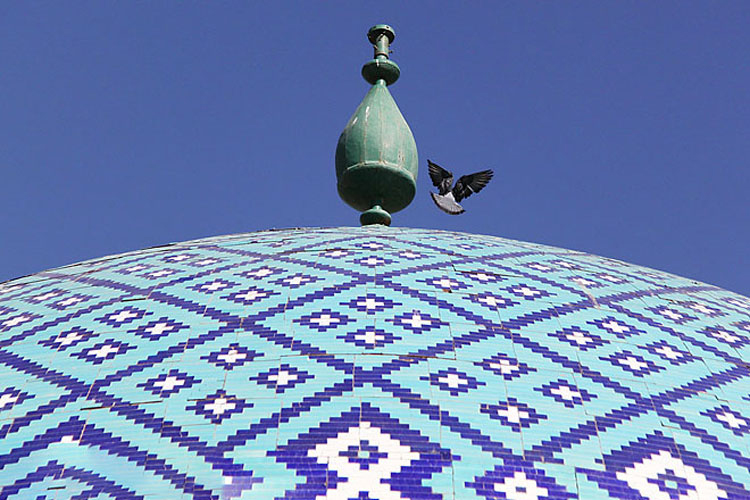
Stucco Works of Sayyed Roknadin Mausoleum
The stucco works of Sayyed Roknadin Mausoleum are also among the most important parts of this tomb which have been created by molding through three different methods. In the first method, the gypsum molds were made separately and mounted on the wall with glue. In the second method, semicircular gypsum pieces were created first and then were connected to the desired section with handmade plaster. The stucco works created through this method are mostly seen in the mihrab of the tomb. The third method was also performed by pouring liquid gypsum into the mold and placing it on the desired surface in order to let the pattern to be formed.
Another technique used for creating stucco works in Sayyed Roknadin Mausoleum is the one which is more damage resistance and was performed by transferring the desired pattern on prepared surface in the form of an inscription.

It should be mentioned that Bogheh-ye Sayyed Roknaddin was registered in Iran National Monuments on December 7, 1935 with registration No. 246.
Find more about the city of Yazd in Most Visited Places in Yazd
For more information about Sayyed Roknadin Mausoleum, please contact Raadina Support.
Online Support










